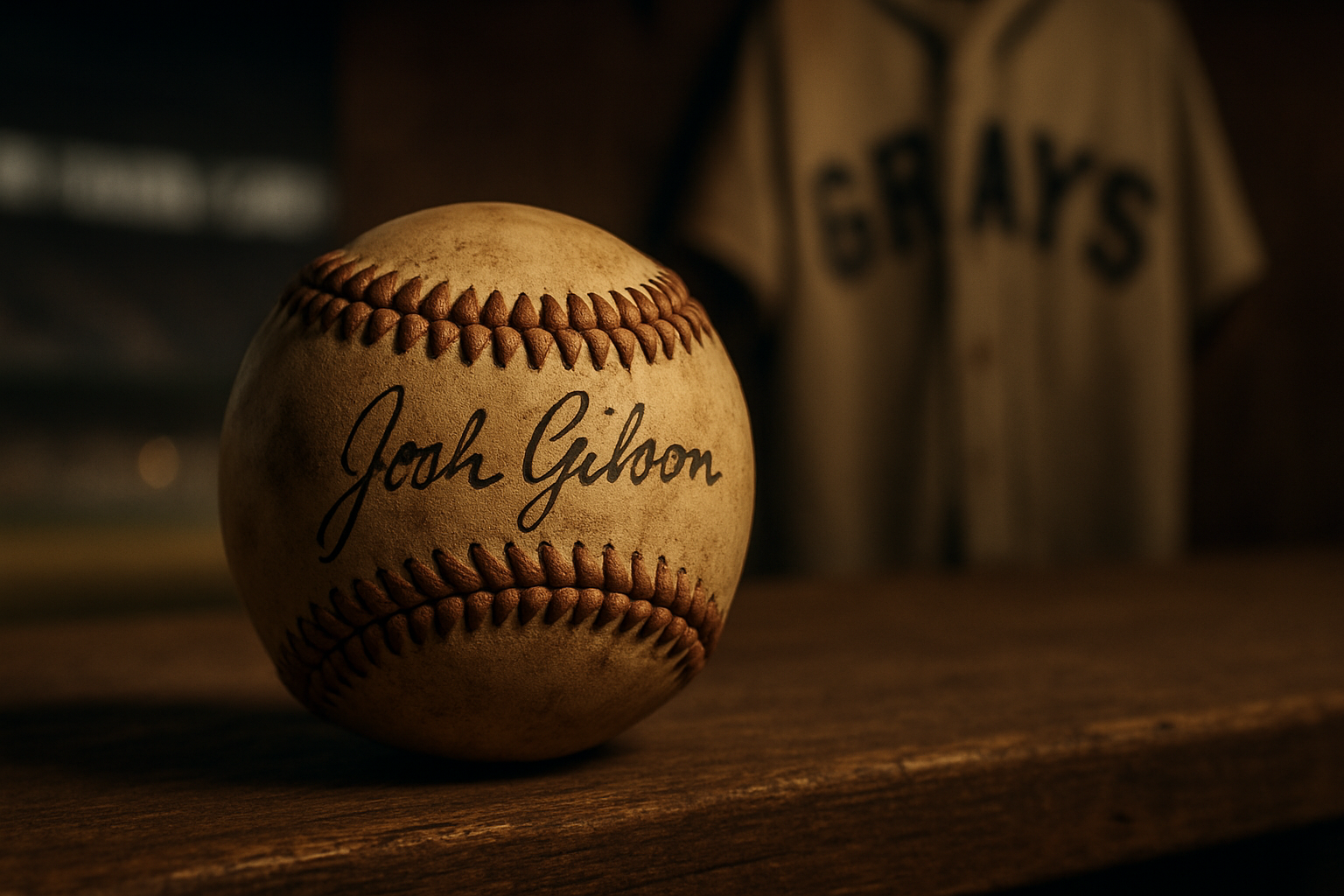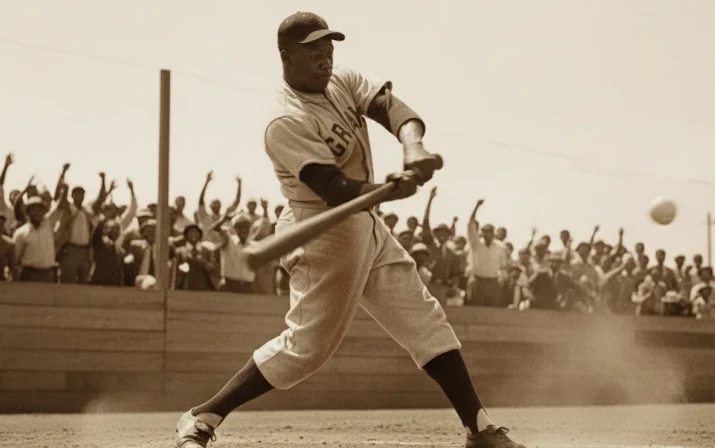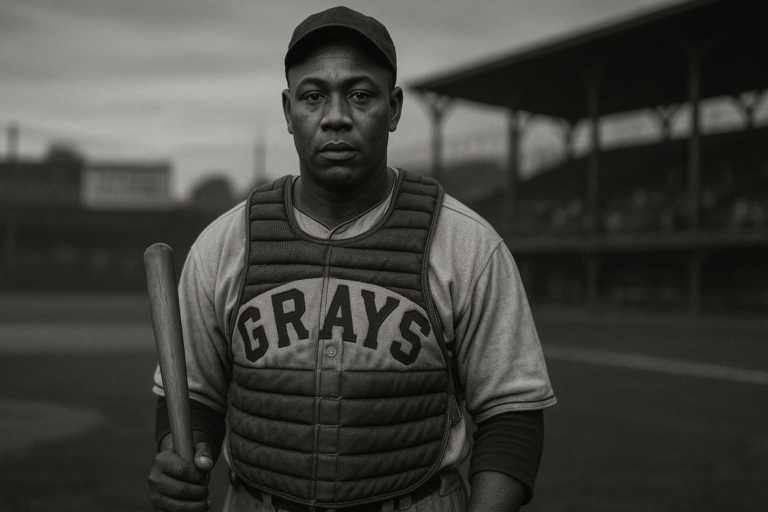
TL;DR
- Josh Gibson stood as one of the strongest hitters the sport has seen.
- Negro Leagues stats now sit inside MLB records, pushing his numbers to the top.
- A signed Josh Gibson Baseball connects fans to a history long ignored.
- His power, story, and struggle give his name weight that goes far past stats.
- You keep his legacy alive by learning it and sharing it.
- TL;DR
- Josh Gibson: The Power, the Myth, and the Legacy That Baseball Almost Missed
- Who Was Josh Gibson?
- Power That Sounded Unreal, Then Held Up Under Study
- Life Inside The Negro Leagues
- The Human Story Behind The Legend
- Josh Gibson Baseball Today: Memory, Stats, And One Very Special Ball
- Josh Gibson Baseball – FAQ
- Hall Of Fame, Legacy, And What We Do With His Story
- Key Takeaway
Josh Gibson: The Power, the Myth, and the Legacy That Baseball Almost Missed
If you love baseball history even a little, the name Josh Gibson has a way of stopping you in your tracks. It almost hangs in the air for a second. You hear it, and you know you are not just talking about stats, you are talking about story, about weight, about what could have been if the doors of Major League Baseball had opened sooner.
This is the strange tension with Josh Gibson. On one hand, he is a legend, spoken of in the same breath as Babe Ruth and Hank Aaron. On the other hand, he is still, in many ways, a secret. A giant who played in leagues that were pushed off to the margins while he was alive.
If you are here, you probably want more than the quick version. You want to understand the man, the record books, and even why something like a single Josh Gibson Baseball can feel sacred to a collector. So let us walk through his story together, not like a textbook, but like a conversation in the stands between innings.
Who Was Josh Gibson?
Josh Gibson was born on December 21, 1911, in Buena Vista, Georgia. His family moved to Pittsburgh, and that steel town became his baseball home. He grew up as a working kid who just happened to swing a bat like almost no one before or since.
He played catcher, which already sets the tone. Most power hitters do not strap on the gear behind the plate. According to the Baseball Hall of Fame biography of Josh Gibson, he was regarded as the best power hitter of his era in the Negro Leagues, and some would argue, in the sport as a whole.
If you want a fuller sweep of his rise from sandlots to stardom, you can dig into Josh Gibson’s rise to baseball legend, which tracks how he went from unknown teenager to the most feared bat in Black baseball.
By his late teens, he was already catching for the Homestead Grays and the Pittsburgh Crawfords, two of the strongest teams in Negro League history. He never got a shot in the white major leagues, but when you look at who he played with and against, you are not looking at second-tier talent. You are looking at parallel greatness.
Power That Sounded Unreal, Then Held Up Under Study
You hear the old stories, and they sound made up. A home run that leaves Yankee Stadium. Shots measured at 500 or even 580 feet. Pitchers hid when his name came up in the lineup.
For years, those stories floated around like campfire tales. But as more research came in, the numbers started to back up the myth. Major League Baseball now recognizes Negro Leagues statistics as major league stats, and as a result, Gibson sits at or near the top in several categories. The MLB Negro Leagues profile on Josh Gibson highlights that he led in batting average, slugging, and OPS in ways that would sound impossible if they were not now official.
There is still some mystery around his home run totals. The Negro Leagues Baseball eMuseum notes that he was credited with hundreds of home runs, many in exhibition games or barnstorming tours that were never logged in traditional stat books. That is part of what makes him hard to summarize. You cannot just scan a tidy column of numbers and call it a day.
If you enjoy getting into the weeds, a SABR statistical analysis of Josh Gibson’s place in history breaks down his seasons, his leagues, and how his rate stats compare with major league legends. Spoiler: he holds up just fine.
For a more story-driven look at specific swings, you can walk through Josh Gibson’s most memorable home runs. It reads a bit like a highlight reel on paper.
Life Inside The Negro Leagues
To really understand Josh Gibson, you have to set him back inside Negro Leagues history, not just pull him out like a trading card.
The Negro Leagues grew out of segregation, out of closed doors and hard lines. Black players, barred from MLB, built their own structure, their own stars, their own rivalries. The Origins of the Negro Leagues and Josh Gibson’s role trace how these leagues formed and how players like Gibson anchored them.
Gibson played for the Pittsburgh Crawfords and, most famously, the Homestead Grays. Those teams were loaded, with names like Satchel Paige and Buck Leonard sharing fields, trains, and long bus rides with him. Schedules were packed, the travel was rough, and the pay was lower than what white stars received for the same level of play.
Even with that, the Negro Leagues built a vivid, loud, joyful baseball culture. The crowds were lively. The games mattered deeply in Black communities. In many ways, Josh Gibson was not just a player in this story, he was one of its central pillars.
Suppose you want a clean snapshot of his playing career and positions. In that case, Baseball Reference’s Josh Gibson page is a helpful starting point, especially now that more Negro League stats are folded into the record.
The Human Story Behind The Legend
When we talk about legendary athletes, we tend to flatten them. They become numbers, plaques, and quotes. Josh Gibson’s life does not let you do that for very long.
He carried heavy personal grief. There were health struggles. There was the quiet pain of knowing he was good enough for the majors, but time and prejudice kept that door shut. He died in 1947 at just 35 years old, right before Jackie Robinson stepped onto a National League field.
On the site, we go into more depth on Josh Gibson’s family life and legacy, including the way his children and community carried his name forward. When you sit with that side of the story, the box scores feel different. He becomes a father, a son, a neighbor, not just a slugging percentage.
I still remember the first time I read that he used to sit in the stands at Pittsburgh games and watch the majors play in the same city where he starred for the Grays. That image has stayed with me. Two ballparks, two systems, one city. You cannot fix that with a plaque, even a Hall of Fame one, but at least now the record books are shifting.
For a quick, broad view that ties it all together, the Wikipedia entry on Josh Gibson is helpful, especially for dates and team timelines.
Josh Gibson Baseball Today: Memory, Stats, And One Very Special Ball
So what does all this history have to do with one physical baseball, or with you reading an article in 2025?
For collectors and fans, a Josh Gibson Baseball is not just ink on leather. It is a bridge. When you see his name on a ball, you do not just think about a swing; you think about a whole missing chapter of baseball that is finally being stitched back in.
MLB’s formal move to integrate Negro Leagues stats into the official record has changed how many fans talk about greatness. Articles like this modern look at Josh Gibson’s new all-time numbers show the ripple effect. Suddenly, leaderboards shift. Conversations at bars and barbershops shift too.
That is part of why documenting his home runs, his Negro Leagues seasons, his personal story, and yes, artifacts like the only known autographed baseball, matters so much. It anchors the legend in something you can point to and say, “That is real.”
If you want a focused view of how his Negro Leagues career reshaped the game, the site has a dedicated breakdown of Josh Gibson’s Negro Leagues dominance. It ties his on-field power to the recognition he is finally getting now.
Josh Gibson Baseball – FAQ
Who was Josh Gibson?
Did Josh Gibson ever play in Major League Baseball?
Why are Josh Gibson’s stats now counted as major league numbers?
Why is a Josh Gibson Baseball so valuable to collectors?
How many home runs did Josh Gibson hit?
When was Josh Gibson elected to the Hall of Fame?
Hall Of Fame, Legacy, And What We Do With His Story
Josh Gibson was inducted into the National Baseball Hall of Fame in 1972, alongside Buck Leonard, long after his death. The Hall’s feature on Buck Leonard and Josh Gibson’s election gives a sense of how overdue that moment was.
Some people look at his story and feel mainly anger over what he was denied. Others feel mainly awe at what he achieved anyway. I move back and forth between those reactions. On some days, I lean more heavy on the loss, other days I am simply grateful that we still get to hear his name, study his numbers, and teach new fans about him.
In the end, his legacy is not one clean thing. It is a mix of towering stats, whispered stories about baseballs landing far beyond fences, hard family history, and a name that is finally being printed on the same lines as other all-time greats.
If you have read this far, you are already part of that legacy. You keep his story alive simply by caring enough to learn it. Maybe your next step is to share one of his numbers with a younger fan, or to show someone a picture of him in his catching gear, or to look a little closer at the next piece of Negro Leagues memorabilia you see.
Whatever you do, let at least one thing stick: Josh Gibson was not a side story. He was central to what baseball was and what it is becoming more honest about. And that, for a name inked on a simple white baseball, is a legacy worth guarding.
Key Takeaway
Josh Gibson was not a side note in baseball. His bat, his position behind the plate, and his life inside the Negro Leagues put him on the same level as the all-time greats. When you see his name on a baseball, you are looking at power, loss, and a story the sport is only starting to credit the right way.



